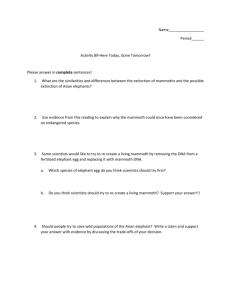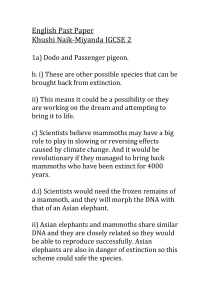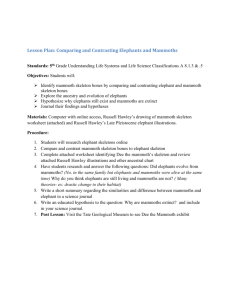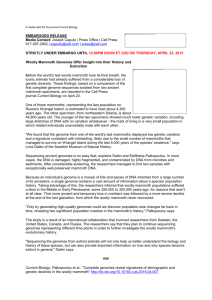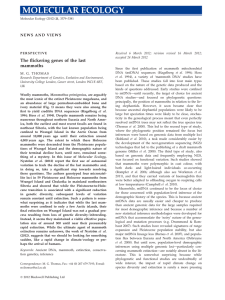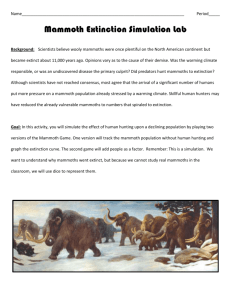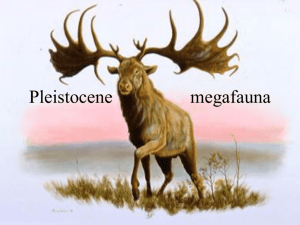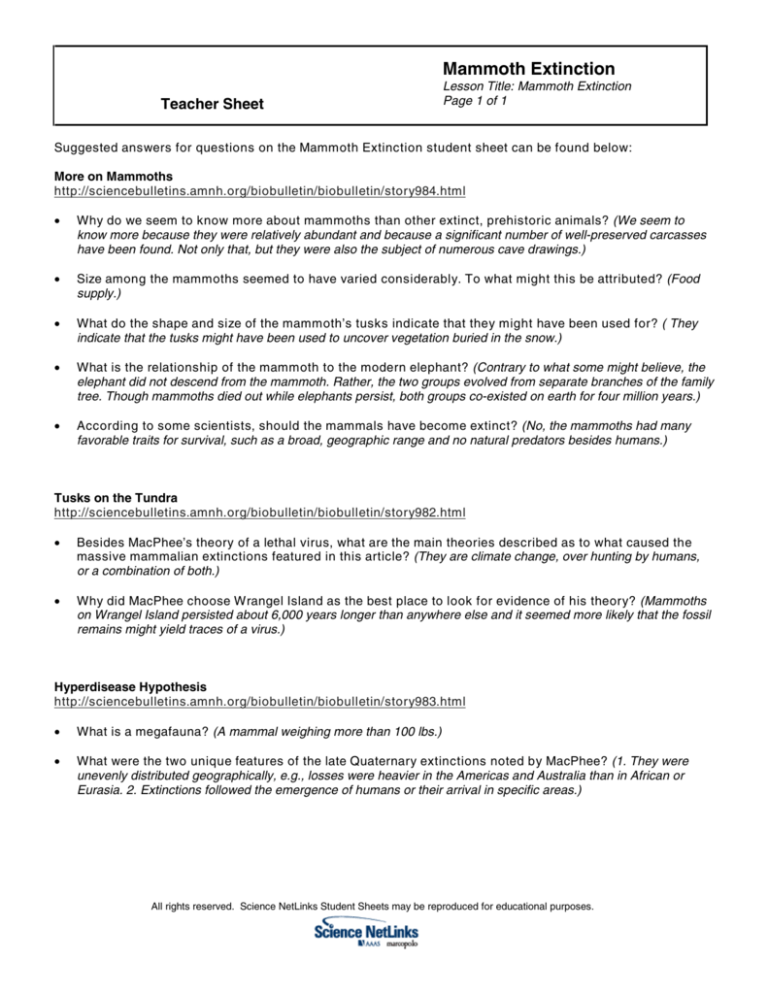
Mammoth Extinction
Teacher Sheet
Lesson Title: Mammoth Extinction
Page 1 of 1
Suggested answers for questions on the Mammoth Extinction student sheet can be found below:
More on Mammoths
http://sciencebulletins.amnh.org/biobulletin/biobulletin/story984.html
•
Why do we seem to know more about mammoths than other extinct, prehistoric animals? (We seem to
know more because they were relatively abundant and because a significant number of well-preserved carcasses
have been found. Not only that, but they were also the subject of numerous cave drawings.)
•
Size among the mammoths seemed to have varied considerably. To what might this be attributed? (Food
supply.)
•
What do the shape and size of the mammoth’s tusks indicate that they might have been used for? ( They
indicate that the tusks might have been used to uncover vegetation buried in the snow.)
•
What is the relationship of the mammoth to the modern elephant? (Contrary to what some might believe, the
elephant did not descend from the mammoth. Rather, the two groups evolved from separate branches of the family
tree. Though mammoths died out while elephants persist, both groups co-existed on earth for four million years.)
•
According to some scientists, should the mammals have become extinct? (No, the mammoths had many
favorable traits for survival, such as a broad, geographic range and no natural predators besides humans.)
Tusks on the Tundra
http://sciencebulletins.amnh.org/biobulletin/biobulletin/story982.html
•
Besides MacPhee’s theory of a lethal virus, what are the main theories described as to what caused the
massive mammalian extinctions featured in this article? (They are climate change, over hunting by humans,
or a combination of both.)
•
Why did MacPhee choose Wrangel Island as the best place to look for evidence of his theory? (Mammoths
on Wrangel Island persisted about 6,000 years longer than anywhere else and it seemed more likely that the fossil
remains might yield traces of a virus.)
Hyperdisease Hypothesis
http://sciencebulletins.amnh.org/biobulletin/biobulletin/story983.html
•
What is a megafauna? (A mammal weighing more than 100 lbs.)
•
What were the two unique features of the late Quaternary extinctions noted by MacPhee? (1. They were
unevenly distributed geographically, e.g., losses were heavier in the Americas and Australia than in African or
Eurasia. 2. Extinctions followed the emergence of humans or their arrival in specific areas.)
All rights reserved. Science NetLinks Student Sheets may be reproduced for educational purposes.

